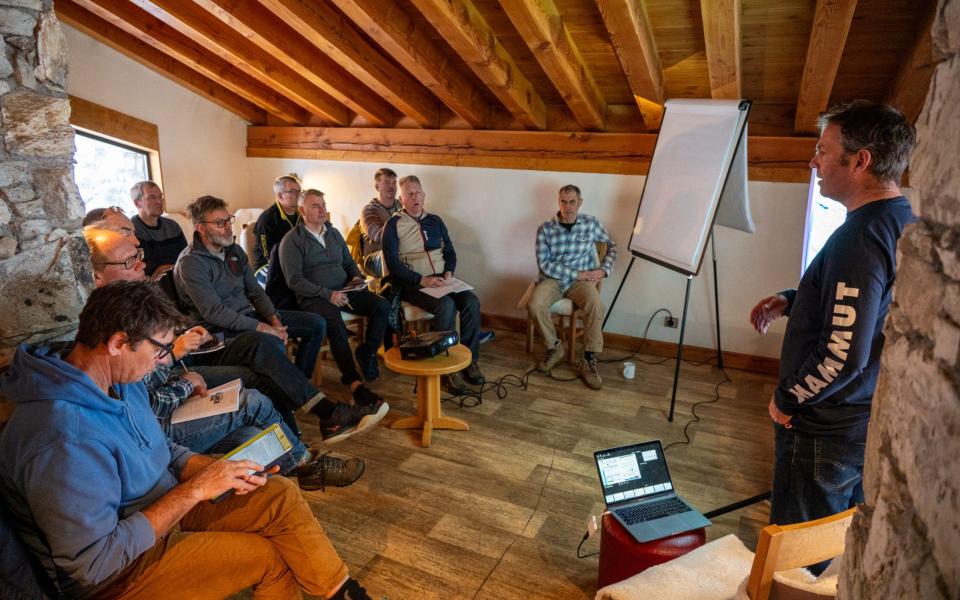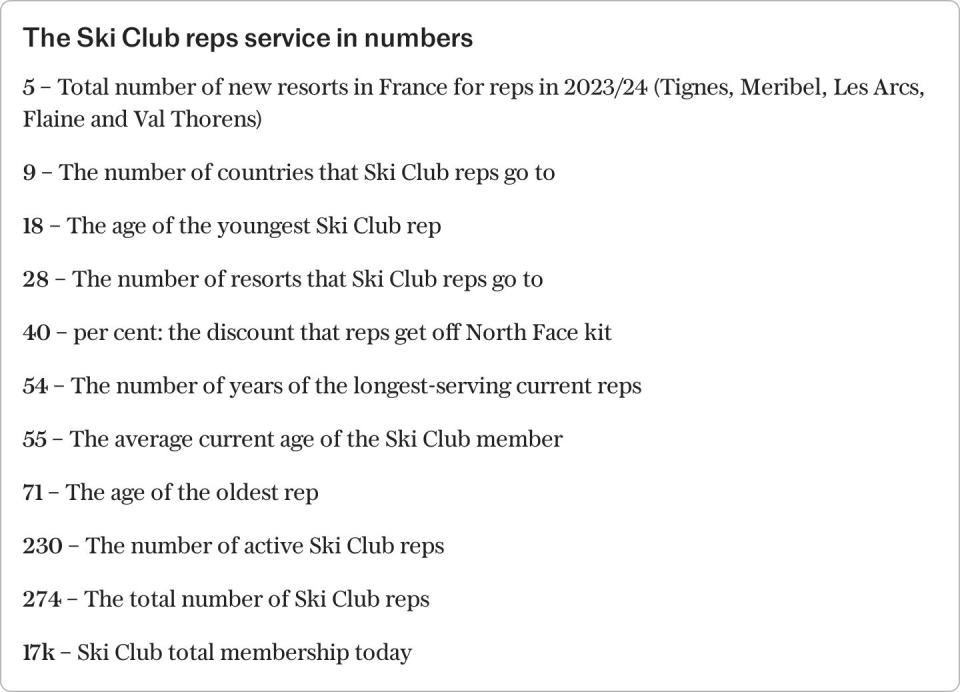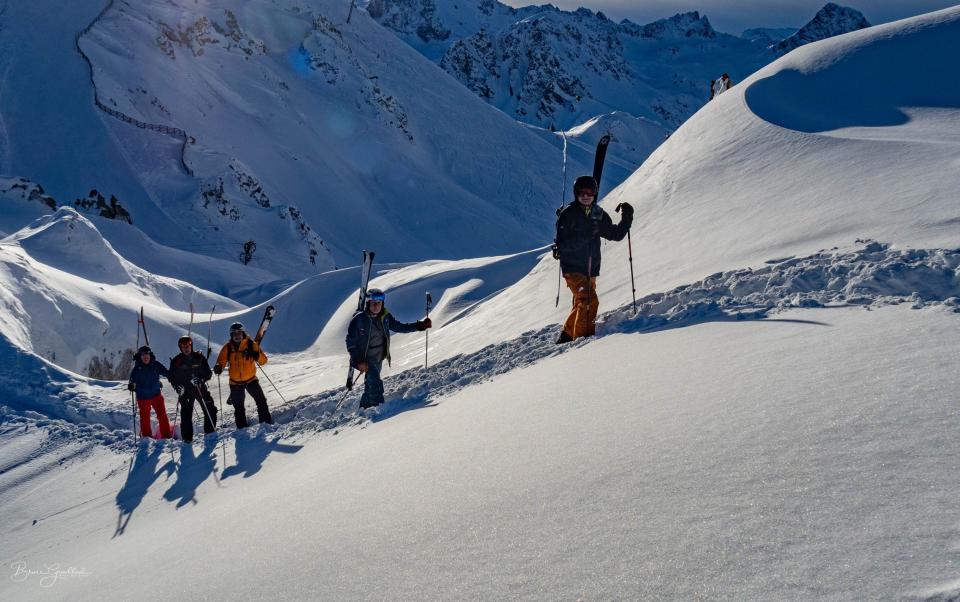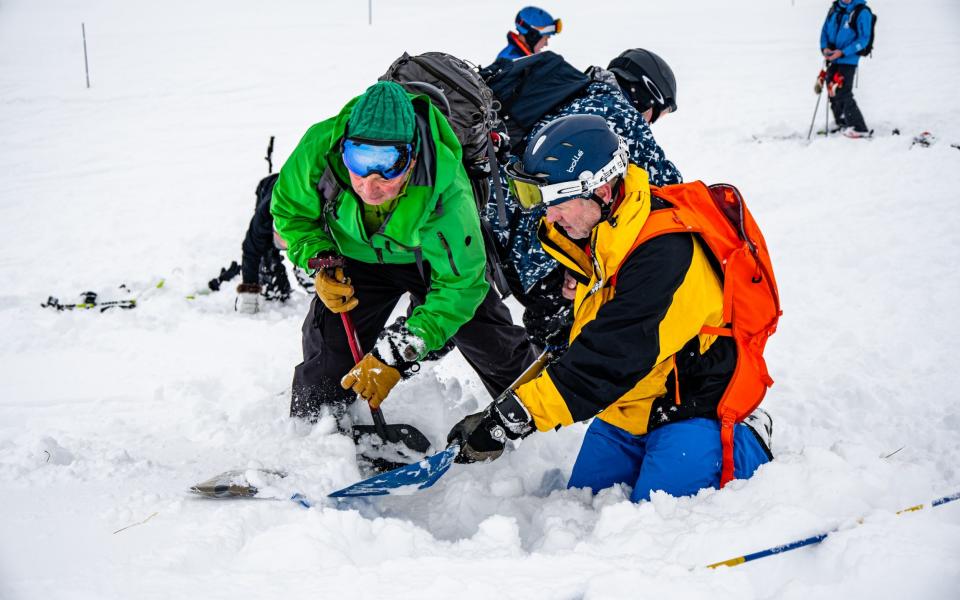I learnt to be a Ski Club rep – this is what it’s like

Within seconds a 200-feet-wide slab of snow, the weight of 1,000 cars, was barrelling down a mountain. “Avalanche! Elyse!” a voice called. Ten frantic minutes later Elyse was found, 500 feet down the mountain, her nose-ring ripped away, her airbag collapsed, trapped in freezing snow. But she was alive. Three others never came home.
This didn’t happen to me, but to 2008 Freeride World Champion Eylse Saugstad and 15 friends in North America on February 19, 2012. The scenario was described in a Pulitzer-Prize-winning New York Times account of that fateful day, entitled Snow Fall: The Avalanche at Tunnel Creek.
Myself, along with 20 other skiers, had been given this article to read as homework. We were in the resort of Tignes in France, training to be reps for the Ski Club of Great Britain, being taught by the top guns of the ski industry. All of us were on an 11-day Mountain Safety and Leadership Course, and this was part of our three-day American Avalanche Level 1 qualification.
It was one of four modules – including on-snow performance, all-terrain skiing and “how to be a great rep” – that we needed to pass the rep course, which, amazingly, hasn’t changed much in the past 97-years.

Revival of the reps
Last November, the Ski Club announced they were increasing their in-resort rep service from 18 to 24 resorts in 2022/23, to 30 this winter and 50 by 2030, opening up hundreds of extra slots to eager volunteers. I’d signed up, along with a flurry of others. It was a dramatic U-turn from summer 2019 when they cancelled the service entirely. Following legal advice, they have changed the old “blue coats” leaders’ model to “social skiing”. The coats are banned and reps are no longer allowed to lead.
Our role? To be one of 230 volunteers (aged 19 to 71) acting as a social ski concierge for the Club’s 17,000 members – the oldest and biggest of its kind in the world. This involves hosting members in resorts or on the Club’s Freshtracks holidays, organising social skiing and events. It isn’t paid but expenses are covered and slots range from a long weekend off-piste hosting in Europe to three weeks in Canada.

Most on my course were either mid-life professionals, empty-nesters or early retirees. All were talented skiers, most had skied seasons and two were BASI instructors. We shared a common passion of skiing more, with purpose.
For retired finance director Philippa Oram, who has skied for 36 years, her repping raison d’etre was to “have fun with other like-minded skiers.”
“My husband doesn’t ski and it’s my passion,” she explained.
A general vibe of, if not now, when? boosts sign-ups. Mike, whose 18-year-old daughter was considering a ski season, had signed up to relive his own seasonaire days, now that he could afford to take the time off work and was still “relatively young and fit”.
Peter Knight, who grew up not knowing anyone who skied, was grateful for the chance to ski across more resorts in the role. However, he felt strongly that The Ski Club demographic needed to diversify. “My SCGB rep experience has been entirely positive but I’d love to see more diversity in skiing, membership and the cohort of reps,” he said – less than one-third of Ski Club reps are women. “I’m now aware that I perfectly fit the white, male, middle-age and class stereotype but I do hope this can change.”

Learning to be an insider
Each module of the course bolted onto the next. As well as the essential avalanche safety training, we spent time on the piste taking carving lessons and listening to advice on ski equipment. Another day, Club chairman Angus Maciver talked us through the art of being a good rep: route planning; learning chairlifts and mountain restaurants by names; knowing the closure times as well as always looking for alternative, easier (or more challenging) routes down for all ability skiers.
But perhaps the golden nugget takeaway was simply the rep’s course WhatsApp group - which has been an invaluable source of information. All sorts of information is shared from reps in all corners of the globe, from best insurance to weather apps, kit reviews to gear discounts, powder dumps to avalanche warnings.
Life-changing lessons
On the final day of the course, after completing our homework and discussing the key takeaways from Saugstad’s Pulitzer-Prize article, we were unleashed in Tignes’ ski area and skied white gold, relishing the turns. Then, disaster. Looking for a fresh pitch down, we’d come across an avalanche scene of our own. Kit lay scattered across the debris field. “Aidez-moi!” a voice called. As if on automatic pilot, we’d switched into rescue mode putting all our new skills to the test.
In theory, at least. This was our exam. “Firstly, well done. Successful result. You got them all out alive,” said Bruce Goodlad, co-founder of Avalanche Geeks and the Club’s safety advisor since 2018. “12 minutes. Not bad. Up to 15-minutes, 80 per cent chance of survival. After 15-minutes, 80 per cent chance of death.”

Then he said something that gave me shivers. That I’ll never forget. “Make no mistake. Avalanches are not black swan events or the wrath of God. Nine out of 10 are human triggered,” reiterated Mike. “If you’re not sure of the risk, don’t ski it. That’s what we’re here to teach you. If there’s only one takeaway from this course, take this. Make good decisions. Ski safe.”
And with that, the course was over. It was widely agreed it had been “excellent” and far more detailed than any of us had hoped. We returned home to our families for Christmas, with a new world of opportunities on the slopes now at our fingertips.
What’s it like to be a rep
The Ski Club of Great Britain’s longest-serving current rep, David Baker, 71, looks back on his 54-years volunteering

I‘ve skied with thousands of members in over 30 resorts over 55 years. My daughter Anna (34) is a rep too. We repped together in Zermatt last year.
I’ve always loved skiing. I first skied at age three (1955) in Switzerland’s Andermatt. My brother had TB and we’d gone for ‘fresh air’.
Aged 17 (1969), I joined the Davos rep training course. As today, it covered avalanche safety, route finding, ski performance and social skiing (ski ability tests, weekly races and in-resort drinks events).
Off-piste, we tied 10-metre red avalanche cords around our waist. Transceivers or avalanche airbags came later.
The Club was very social. The Eaton Square clubhouse was jacket-and-tie, and had a bar, dining room and rooms. The black-tie ball at Hurlingham was a highlight.
Pre-internet, there was an Arnold Lunn library and Equipment Advice Centre with resort maps and paper files. I’d pop in to look up places and to see the season’s new skis, boots and bindings.
Like today, it was a volunteer position, unpaid but expenses paid with a mandatory “rep refresher” course every five years. We had an annual 120-page paper reps manual. Now we have the Ski Club website and app. Until the 2000s, we repped families and school trips too, and sent snow reports to newspapers.
I’ve skied Grimentz, Engelberg, Flaine, La Grave, Whistler, and the Tarentaise resorts. I’m hugely grateful and I’m hoping I’ll make it to 60 years as a rep – only six more to go!
Essentials
The Ski Club of Great Britain’s rep course costs from £3,299 (2023 price), for 11 days half-board accommodation and transfers. The training includes skiing with fully qualified mountain guides and instructors, expert tuition, personal video analysis and American Avalanche Association ‘Avalanche Safety Course Level 1’ qualification. 2024 prices and dates are to be confirmed. Find out more and apply at skiclub.co.uk/ski-club-reps.


